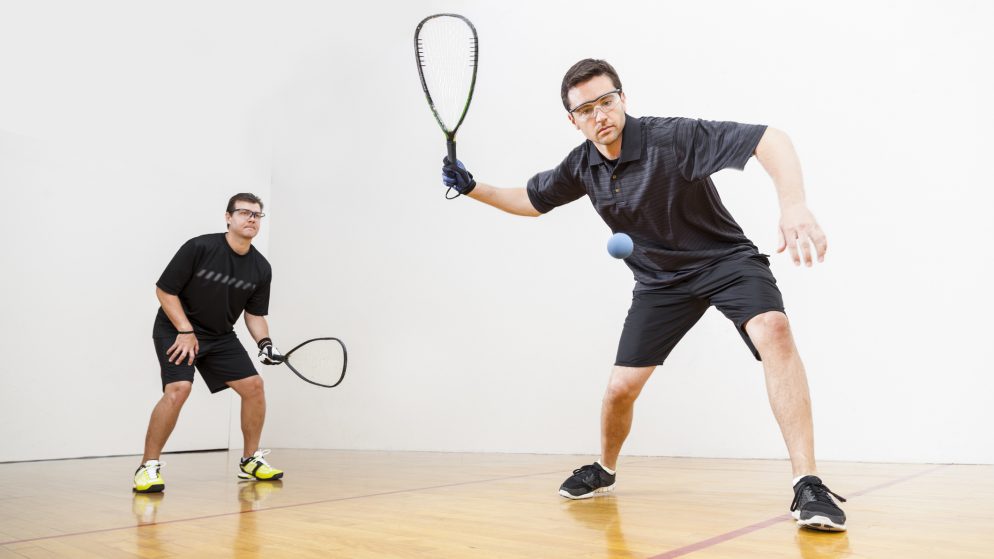
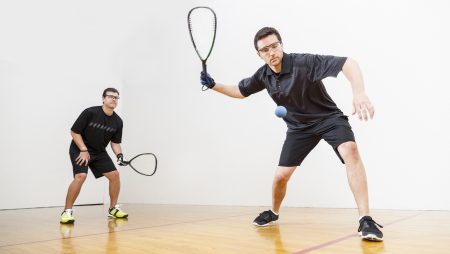 Two men playing racquetball on court. Shot at 1/100 of a second shutter speed to create a slight blurred motion to reveal the fast motion of racquetball.
Two men playing racquetball on court. Shot at 1/100 of a second shutter speed to create a slight blurred motion to reveal the fast motion of racquetball. Racquetball Rules. Racquetball was invented by Joe Sobek in 1950. Sobek, an American proficient tennis and squash player needed to design an unused game that combined components of squash, handball. And paddleball that was fast and simple to learn.
Initially called paddle rackets, the game’s rules were codified in 1952. Through utilize of America’s 40,000 YMCA and JCC (Jewish Community Center) handball courts, the wear accomplished quick development. In 1969 the Universal Racquetball Affiliation (disastrous acronym!) was established and acknowledgment by the US Olympic Committee was taken after. There are right now around six million racquetball players, as well as numerous more that play (confusingly) racketball, a less energetic UK-invented variation of the sport.
Object of the Game
The question of racquetball is to win points by winning rallies. The trades of play between players where the ball must be hit against the front wall. And returned with no more than one bounce. Matches are played as the most excellent of two diversions, with a third, shorter tie-break amusement in the event that the scores are level after two games. Racquetball Rules.
Players & Equipment
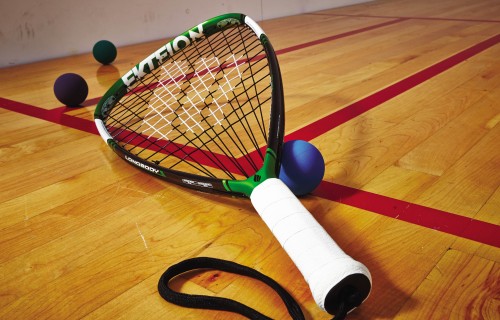
Racquetball can be played as singles (one versus one), doubles (two versus two), or two competing against one, the last-mentioned being for casual diversions. The rules are basically the same with the most contrast being the service and so here we are going to see exclusively at the singles game.
The as it were equipment truly required is the ball and the racquets, in spite of the fact that of course the court itself is required as well. The court is comparable to a squash court, being completely encased and rectangular. It is both 20ft tall and wide and 40ft in length with ruddy lines to demarcate the benefit and reception zones.
Scoring :Racquetball Rules
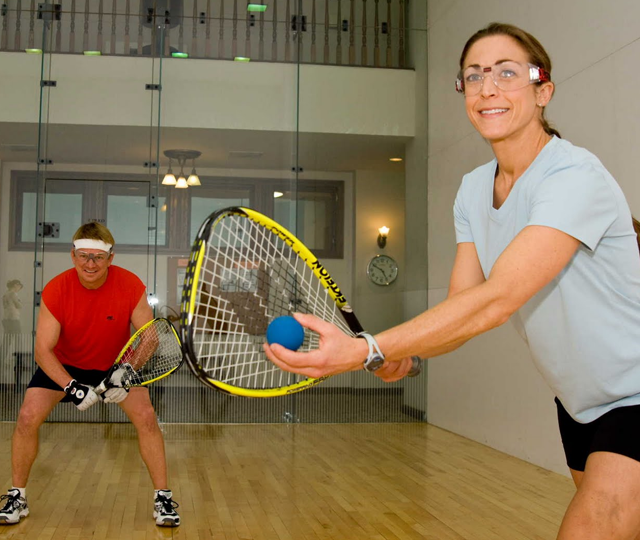
Points are scored only on your own server, as in squash, volleyball, and other sports. If you “win” a point on the opponent’s serve you win the service but no actual point. You lose the point if and when:
- A ball hits the floor more than once before you play your return.
- A ball skips or does not hit the front wall without bouncing when you play your shot.
- Then the ball goes into the viewing gallery, wall opening or out-of-bounds from your shot.
- The ball hits the other player but was clearly not going to hit the front wall.
- The ball hits you (i.e. the player who hit it originally).
- To switch racquet hand during the point.
- You touch the ball with any part of your body or clothes.
- You carry or throw the ball with the racquet (double hit).
- The player serving makes two (or one, under the one serve rule sometimes used at the top level) illegal serves.
Winning the Game
The only equipment truly required is the ball and the racquets, However, of course, the court itself is required as well. The court is comparable to a squash court, being completely encased and rectangular. It is both 20ft tall and wide and 40ft in length with ruddy lines to delineate the benefit and gathering zones.
Rules of Racquetball
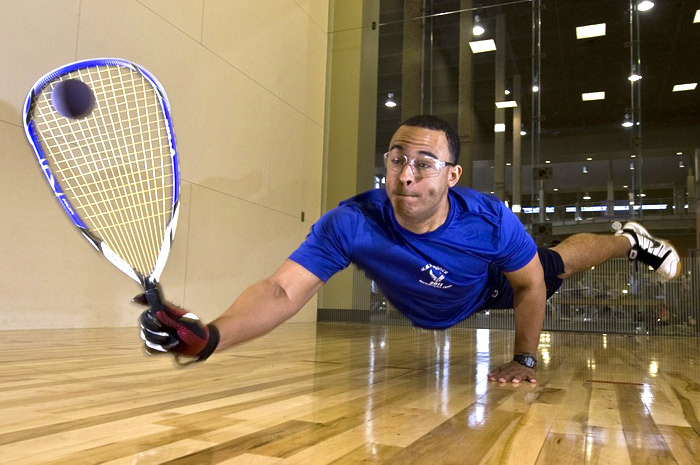
- The player who is to serve first is decided by lots in the first game. Alternates for the second game and goes to the person with the most cumulative points for the decider (if needed).
- To serve, the ball is bounced before being hit against the front wall after. Which it may hit one side wall before hitting the floor again. The ball cannot hit the back wall on the full and must not touch the ceiling. The ball must hit the front wall first or the point (i.e. both serves) is automatically lost and the other player serves.
- Once the ball is in play, that is, has passed the receiving line or bounced beyond the short line. The receiver must hit it against the front wall.
- Apart from on serve, the ball can be hit against any combination of walls. And ceiling as long as it hits the front wall without bouncing.
- A “hinder” is when an obstruction is caused by one player being in the way of the ball or their opponent’s view. This is normally called as a let and the point is replayed. Although in the case of a penalty hinder. Where one player has been deprived the chance of a point-winning shot, they receive the point (or win back serve).
Read more: Varun Kumar, Prasad, and Singh reach quarter-finals in men’s hockey
Visit also: How to Play Rummy: Understanding the Rules and Starting a Game

[…] Visit also: Racquetball Rules, Invented by Joe Sobek in 1950 […]